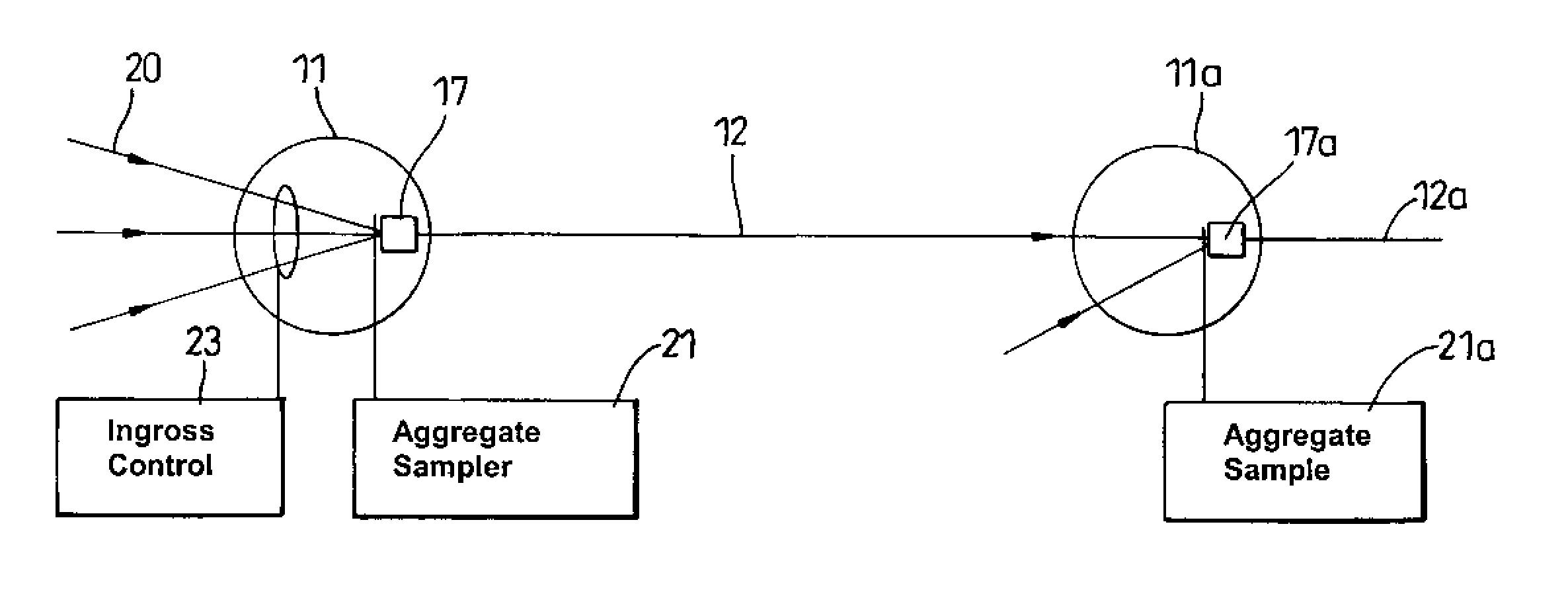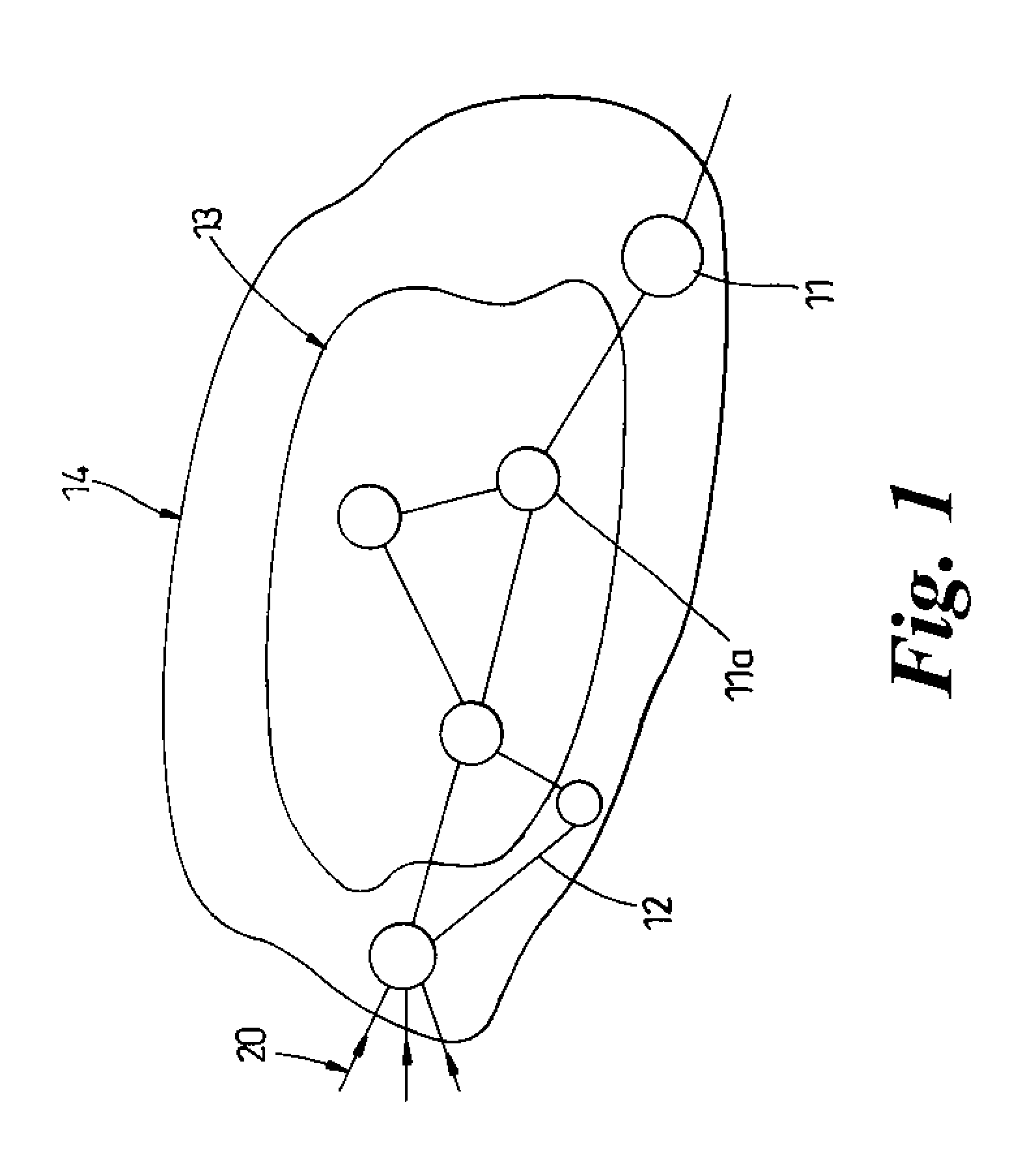Traffic flow management in a communications network
a traffic flow and communications network technology, applied in the field of control of traffic flow in the communications network, can solve the problems of inability to use in congestion price feedback control schemes, inability to effectively allocate bandwidth, and inherently bursty nature of the network, so as to discourage users from abusing the network and improve the overall resource utilization
- Summary
- Abstract
- Description
- Claims
- Application Information
AI Technical Summary
Benefits of technology
Problems solved by technology
Method used
Image
Examples
Embodiment Construction
[0022]Referring first to FIG. 1, this shows an exemplary network in schematic form. As shown in FIG. 1, the network comprises a number of nodes 11, 11a interconnected by links 12. As shown in FIG. 1, the network comprises a care region 13 accessed via an edge region 14. The links 12 are usually optical fiber links, particularly in the core region. Advantageously the network of FIG. 1 is an Internet Protocol (IP) or MPLS (multi protocol label switched) network in which traffic is transported in packet form. An objective of the resource control system is to control the ingress of IP and MPLS traffic in such a way that different traffic classes are treated optimally. In particular, delay sensitive classes of traffic must see minimal congestion inside any router or on entering any of the packet buffers at the entrance to each optical link.
[0023]Referring now to FIG. 2, this shows in schematic form a an edge node 11 and a core network node 11a. At the edge node 11, a number of input traf...
PUM
 Login to View More
Login to View More Abstract
Description
Claims
Application Information
 Login to View More
Login to View More - R&D
- Intellectual Property
- Life Sciences
- Materials
- Tech Scout
- Unparalleled Data Quality
- Higher Quality Content
- 60% Fewer Hallucinations
Browse by: Latest US Patents, China's latest patents, Technical Efficacy Thesaurus, Application Domain, Technology Topic, Popular Technical Reports.
© 2025 PatSnap. All rights reserved.Legal|Privacy policy|Modern Slavery Act Transparency Statement|Sitemap|About US| Contact US: help@patsnap.com



